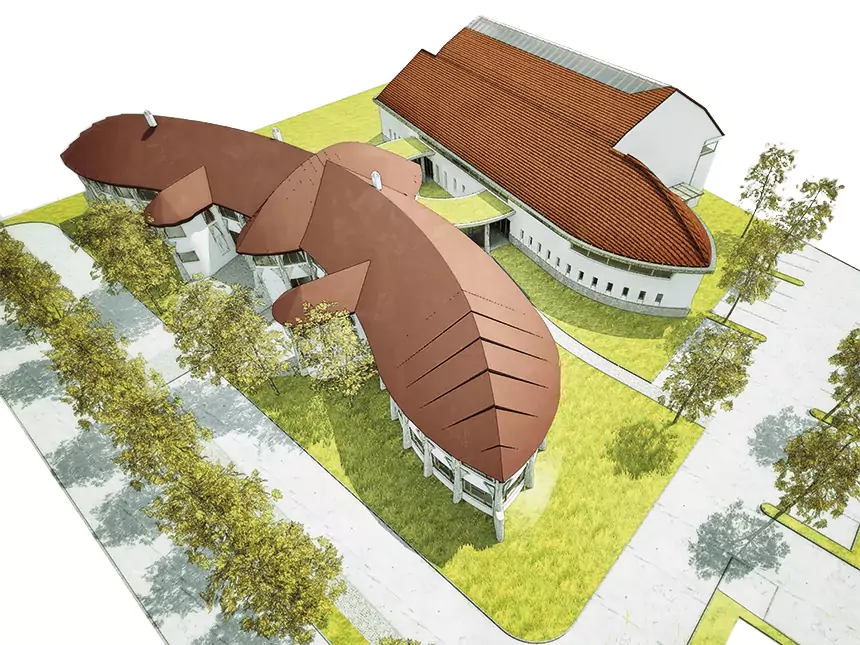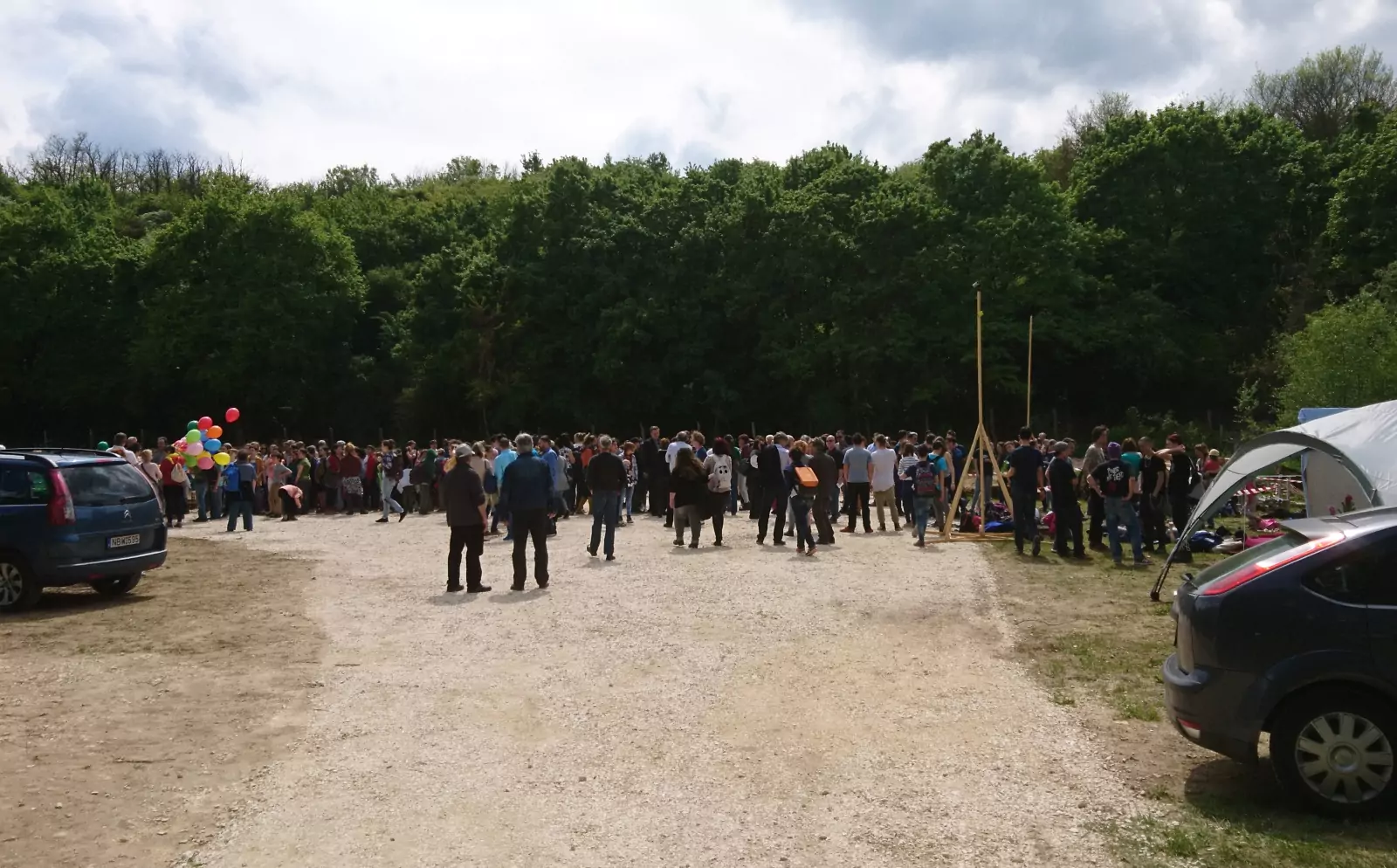Laying the foundation of a sporty community - Lombiq's part in a new gymnasium
Here at Lombiq sometimes we "give back" not just to open source projects, but also to local communities of ours. In the town of Solymár, Hungary an initiative was started that we could support: Fészek Waldorf School together with Parthus Sport Association wanted to build a new gymnasium, which would not only serve the school's pupils but also the town's 10 000 residents.

An overview of the new complex at Solymár, including the new school building (left) and gymnasium (right). Image courtesy of Parthus Association.
The Waldorf education puts an emphasis on kids being physically active as well, so it's quite an issue that the school lacks a proper gym. Soon this will change however, since in February 2018 the new gymnasium will be opened. The foundation stone of the building was laid down, together with a time capsule on the beautiful spring day of 4th May, with us taking part on the ceremony too.
But how come that Lombiq, a technology company has anything to do with a new gym? Well, in Hungary companies can, within strict rules, decide to support local initiatives with part of their corporation tax. Since we pay quite some of that we figured it's time to choose a project we'd like to see succeed: This was the new gymnasium of Solymár.
The gym won't just stand alone: It's part of a bigger decade-long real estate development that revitalises the area of a long closed brick factory, connecting the once industrial part of the town back to the residents' daily life.
Fun fact: "fészek" means "nest" in Hungarian, so I guess we could open a software development school called DotNest too?

The foundation stone laying ceremony with a crowd mostly consisting of pupils and parents.